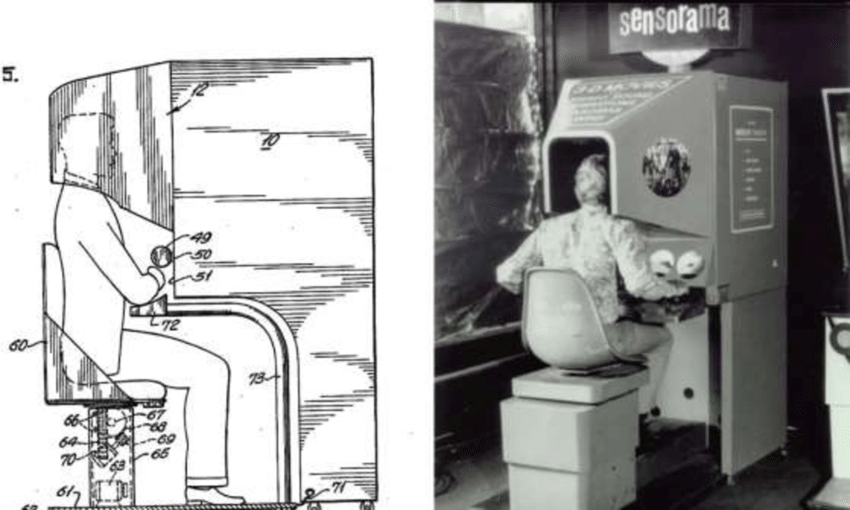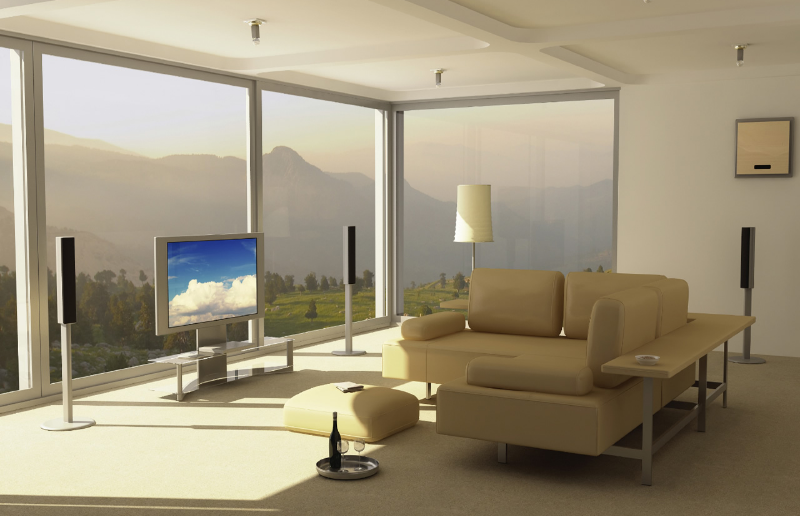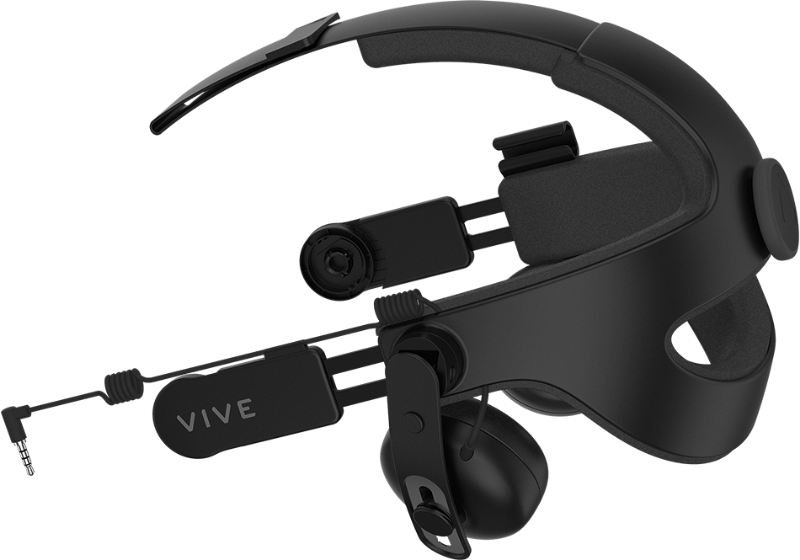The CAD industry has evolved dramatically over the last 30 years. CAD design was brought to the masses through software such as AutoCAD and SolidWorks. This form of 2D and 3D design is used worldwide by millions of people and businesses. In today’s world, we are on the cusp of the next CAD evolution – CAD in virtual reality. In this article, we look at how VR could affect the CAD industry and what products we can expect in the near future.
The Evolution of Virtual Reality
Let us first take a brief look at virtual reality and how it has evolved. Virtual reality is defined as:
“The computer-generated simulation of a three-dimensional image or environment that can be interacted with in a seemingly real or physical way by a person using special electronic equipment, such as a helmet with a screen inside or gloves fitted with sensors.”
Virtual reality has been a concept since the 1950s. Early attempts at immersive VR products included Morton Heilig’s Sensorama machine. This impressive machine featured multi-sensory technology that can tap into the user’s senses by emitting sounds, smells, and simulating motion. Although the machine was ground-breaking, it was ungainly and could not be brought to the masses.

Other examples of early VR include the Aspen Movie Map and the Sword of Damocles. Fast-forward to the modern day, and we now have some highly complex VR devices such as the Oculus Rift and HTC Vive. These VR headsets allow us to explore fully-fledged 3D worlds like never before. The advancement in VR technology, of course, opens the door for VR CAD design.
How Could VR Impact the CAD Design Industry?
So what could VR mean for CAD? In reality, it could potentially revolutionize the whole industry. We could be looking at designing and manufacturing in a totally new way. Imagine this – instead of turning your computer on and opening AutoCAD, you put on your Oculus Rift headset and start designing a new machine part with your hands in virtual reality! The following are some of the main ways that 3D virtual reality could impact the CAD design industry:
It can allow 3D designs to be visualized in greater detail
When using a CAD program such as SolidWorks, we are limited to what we can see. You can, of course, rotate objects and visualize them from different angles. You can also explode multi-part objects to look at single pieces.
RELATED: How to Design a Virtual Prototype for Your New Concept
VR, however, takes design visualization to a whole new level. Imagine looking through a VR lens and holding a product in your virtual hands. You could turn it in your hands and see how it looks from any possible angle. You could inspect it up close and even disassemble it to see how the different parts fit together in practice. VR could potentially give you an unparalleled level of control when designing products.
It can allow designs to be placed in the proper context of their surroundings
Not only could VR enable you to look at designs up close but it could also place them within a large context. Currently, not all CAD design programs can place an item within a particular surrounding. For example, you may design a machine part but not be able to see how it fits within the whole assembly, however. VR could let you do this.

Furthermore, imagine you are designing a piece of furniture or interior decoration. Using CAD VR, you could potentially place that design within a house or room, and then walk through the virtual room to see how it fits and its aesthetics.
It can also reduce the need for physical prototypes
Finally, within the CAD industry, physical prototypes are widely used. A product is usually designed using CAD software. A prototype is then made to test the product and check its viability. This can be a time consuming and costly process. These costs are compounded if multiple prototypes have to be made.
CAD VR could potentially remove the need for physical prototypes. VR software could be used to create realistic and accurate virtual prototypes instead. This could greatly speed up the design process while reducing costs.
What New Technologies Could We See Emerge That Utilize Both CAD and VR?
As you can see, VR has much potential within the CAD industry. Within five to ten years, we could see a total change in how products are designed and manufactured, partially due to VR. But what VR CAD software is already available? Furthermore, what plans are companies making for the future?
Current Programs Available for Use or in Development
First, we will look at the myriad of programs that have already entered the CAD VR market. There is certainly not a large selection, but the products below demonstrate just how ground-breaking this process could be.
MakeVR is an absolutely superb piece of software that combines VR and design. This program is available on HTC Vive headsets and is developed by Californian Company Sixense. One of the first things you notice about this program is that there are no commands or shortcuts – you essentially do everything with your hands (i.e. the HTC controllers).

This means that you can create and design anything by simply pulling, molding, stretching, and manipulating objects in any way you see fit. To create different shapes and objects, you can use tools. (The tools themselves are objects you create from scratch.) We highly recommend watching some videos on this program as it is astounding. To top it off, you can export your creations to other modeling tools, or convert them into files for 3D printing!
GravitySketch is a London-based start-up company that has a history in 3D design. They are currently in the process of launching a Kickstarter campaign to fund their first CAD virtual reality software.
GravitySketch looks to be a superb program that will be compatible with the Oculus Rift and the HTC Vive. The controls of this program are intuitive, and you move, rotate, and resize your designs using a pair of hand controllers. This gives you great freedom when designing.
You can design practically anything, and the program is already being tested by some major manufacturers. Automobile giant Ford, for example, has reportedly tested GravitySketch to design their cars. Designs made in this program can even be exported into SolidWorks for further refinement and testing.
Mindesk is possibly the most advanced VR CAD program we have seen to date. It is the first VR and AR interface that has been integrated into CAD software. Using a VR headset and hand controllers, you can design a CAD project from scratch and have an excellent degree of control over the whole process.
This is the closest product we have seen so far to a working CAD design program in VR. It looks fantastic and brings you common design elements that you would expect from a CAD program.
While other VR CAD programs we have seen require document exportation, Mindesk allows you to switch between desktop and VR views so that you can edit your project on either platform. Finally, the VR program can support the use of SolidWorks and other major software.
WakingApp is a partner of AutoDesk and has been established for several years. This program allows users to easily create augmented reality and virtual reality apps with minimal coding knowledge. ENTiTi is part of this platform and is used to develop dynamic behaviors and objects. There is also an add-on for ENTiTi which allows users to utilize AutoDesk’s Fusion 360 in full VR.
You can turn your CAD design into virtual reality constructs and then share them with your colleagues and friends. This is one of Autodesk’s first forays into virtual reality.
Major CAD Software Producers Already Have Big Plans for VR CAD
The above are some of the main examples of current CAD VR programs and apps. This is just the tip of the iceberg, however. Many of the industry’s largest software producers such as Dassault Systèmes and AutoDesk are also researching VR and pouring finances into new developments. AutoDesk, for example, is experimenting with VR in their Fusion360 program.
Moreover, Dassault Systèmes have been researching VR CAVEs and other technology surrounding VR headsets. If large companies such as these push VR, we should see some awesome programs released in the next few years.
It is clear that virtual reality CAD will play a huge part in this industry in years to come. As developers push the boundaries of VR technology, we should see even more complex CAD programs arise. The possibilities are limitless. If you are part of the CAD industry, you are surely in for an exciting ride as VR CAD becomes a reality and changes how we visualize and design products.
At Cad Crowd, we work with a network of virtual reality rendering freelancers who have worked in the industry. They’re pre-vetted and experienced in fields like architecture and interior design. If you’re looking for help with your 3D VR design, contact us for a free quote.
